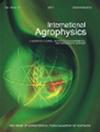火龙果园不同覆盖方式对土壤的影响比较
IF 1.7
4区 农林科学
Q2 AGRONOMY
引用次数: 6
摘要
海南省是中国热带水果的主要产地之一,火龙果产业是当地经济的支柱产业。为了减轻火龙果生长过程中极端温度、破坏性阳光和土壤侵蚀的影响,越来越多的当地种植者在当地果园使用地膜。该地区使用的地膜类型大致可分为三大类:塑料地膜、有机地膜和生物地膜。不同的覆盖方式对土壤的物理化学和生物特性有不同的影响。大量研究表明,覆盖可以通过减少蒸发和调节其温度来增加浅层土壤的水分含量(Adamaviciene et al., 2012;Ma et al., 2018)。覆盖处理也有利于控制杂草,提高土壤养分含量,提高土壤酶活性,改善微生态环境(Xun et al., 2015)。而不同的覆盖方式会改变土壤的状况,Chen et al.(2014)认为,虽然有机地膜不会混入土壤中,但分解的有机物质会逐渐被土壤吸收。膜覆盖在抑制土壤蒸发和保热方面比有机覆盖更有效,构建了一个相对独立的微生态系统(Zhang et al., 2010)。Fang等人(2011)的一项研究表明,新鲜生物质可以©2021波兰科学院农业物理研究所本文章由计算机程序翻译,如有差异,请以英文原文为准。
Effects comparation of different mulching methods on soil in pitaya orchards
Hainan province is one of the major producers of tropical fruits in China, and the pitaya industry is a pillar of the local economy. To mitigate the effects of extreme temperature, damaging sunlight, and the soil erosion during the growth of pitaya, an increasing number of local growers are using mulch in local orchards. The types of mulch used in this area can be broadly classified into three groups: plastic film, organic material, and living mulch. Different mulching practices have varying effects on the physicochemical and biological properties of the soil. A large body of research has shown that mulching can increase the moisture content of shallow soil by reducing evaporation and regulating its temperature (Adamaviciene et al., 2012; Ma et al., 2018). Mulching treatments are also beneficial for controlling weeds, enhancing the content of soil nutrients, improving soil enzyme activities, and improving the microecological environment (Xun et al., 2015). While the conditions of the soil change according to the different mulching practices used, Chen et al. (2014) have claimed that although organic mulch is not mixed into soil, decomposed organic materials can be gradually absorbed into it. A relatively independent microecological system has been constructed by using film mulching which is more effective than organic mulching in terms of inhibiting evaporation and preserving heat in the soil (Zhang et al., 2010). A study by Fang et al. (2011) showed that fresh biomass can © 2021 Institute of Agrophysics, Polish Academy of Sciences
求助全文
通过发布文献求助,成功后即可免费获取论文全文。
去求助
来源期刊

International Agrophysics
农林科学-农艺学
CiteScore
3.60
自引率
9.10%
发文量
27
审稿时长
3 months
期刊介绍:
The journal is focused on the soil-plant-atmosphere system. The journal publishes original research and review papers on any subject regarding soil, plant and atmosphere and the interface in between. Manuscripts on postharvest processing and quality of crops are also welcomed.
Particularly the journal is focused on the following areas:
implications of agricultural land use, soil management and climate change on production of biomass and renewable energy, soil structure, cycling of carbon, water, heat and nutrients, biota, greenhouse gases and environment,
soil-plant-atmosphere continuum and ways of its regulation to increase efficiency of water, energy and chemicals in agriculture,
postharvest management and processing of agricultural and horticultural products in relation to food quality and safety,
mathematical modeling of physical processes affecting environment quality, plant production and postharvest processing,
advances in sensors and communication devices to measure and collect information about physical conditions in agricultural and natural environments.
Papers accepted in the International Agrophysics should reveal substantial novelty and include thoughtful physical, biological and chemical interpretation and accurate description of the methods used.
All manuscripts are initially checked on topic suitability and linguistic quality.
 求助内容:
求助内容: 应助结果提醒方式:
应助结果提醒方式:


